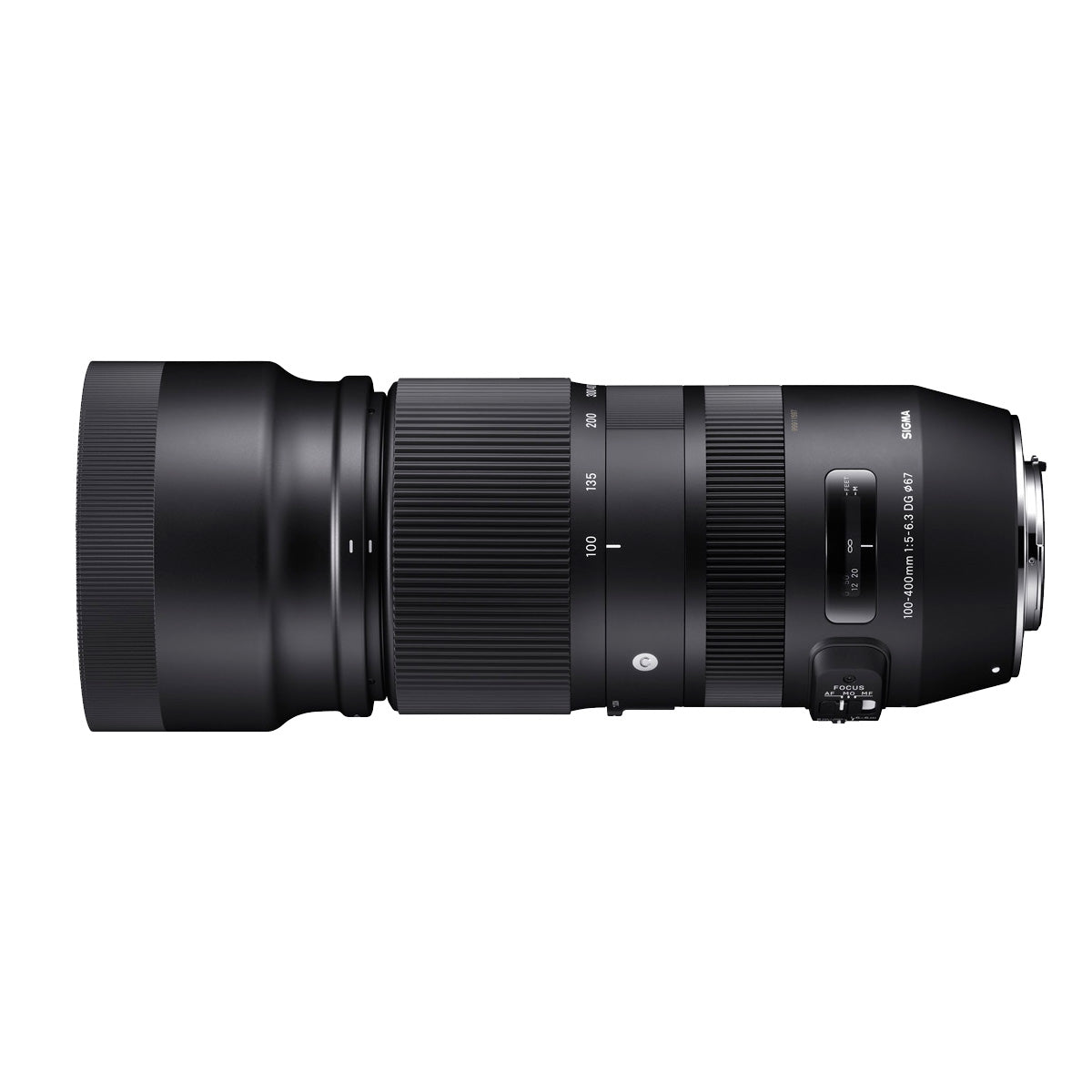Product Description
Introducing the Sigma 100-400mm F5-6.3 DG OS HSM Contemporary Lens
A swift, precise, and compact long-telephoto zoom designed for DSLRs.
Outstanding Optics in a Compact Body
Ideal for photographers requiring a high-performance long-telephoto zoom in a lightweight build, the 100-400mm lens is perfect for capturing fast-action subjects like sports, wildlife, and motorsport. Its portable body, weighing less than 1.2kg, also suits various other genres, including telephoto landscapes and pet photography. Additionally, it boasts a maximum magnification ratio of 1:3.8, enabling macro-style close-ups.

The 100-400mm lens ensures exceptional sharpness throughout the zoom range, thanks to its four SLD elements and advanced Super Multi-Layer Coating, minimizing chromatic aberration and flare. Compatible with Canon and Nikon DSLRs, it features Sigma’s intelligent two-mode Optical Stabilizer to reduce camera shake in low-light conditions. With additional features like a focus limiter switch, custom modes, manual focus override, and a dust- and splash-proof mount, it offers versatility in various shooting conditions.

Outstanding Build Quality
Crafted with a Thermally Stable Composite (TSC) exterior barrel, the 100-400mm lens combines lightweight durability with a sleek finish, providing a premium look and feel. Its internal focus mechanism and Dual Action Zoom enable precise zooming with the zoom ring or rapid adjustments by pushing or pulling the barrel end. The rubberized zoom ring enhances operation and can be locked at different positions using the Lock switch. The lens mount features a durable brass construction and a rubber seal to prevent dust and moisture ingress.

Professional Feature Set
Equipped with an AF/MF switch, AFL button for customizable functions, and a Custom Mode switch, the lens offers convenient controls for versatile shooting scenarios. The focus limiter enhances focusing speed and accuracy, particularly useful in complex compositions. The built-in Optical Stabilizer features modes for general shooting and panning, suitable for capturing fast-moving subjects. With an HSM focus motor, the lens delivers smooth, fast, and precise autofocus for both stills and video, compatible with the latest AF camera technology.

Razor-Sharp Optics Ensure Highly Detailed Images
Despite its lightweight design, the 100-400mm lens delivers outstanding optical quality, even on high-resolution sensors. Its advanced optical design, comprising 21 elements in 15 groups, including four SLD elements, ensures sharpness across the entire frame, minimizing chromatic aberration, flare, distortion, and vignetting. Advanced optical coatings reduce flare and ghosting, producing high-contrast images with rich colours and deep blacks.

A Perfect Option for Longer Landscapes
Popular among landscape photographers, the 100-400mm lens offers exceptional image quality and portability, enabling the capture of small details within landscapes and perspective compression.

Lightning-Fast Autofocus
Featuring an HSM focusing system, the lens delivers fast, accurate, and silent autofocus, ideal for capturing fast-moving subjects like cars, planes, and wildlife.

Compact and Lightweight
At less than 19cm in length, the 100-400mm lens is remarkably light and compact for a long telephoto lens. Its lightweight design makes it suitable for extended carrying and handheld shooting, weighing 770g less than Sigma’s 150-600mm F5-6.3 DG OS HSM | C, albeit with slightly less reach and fewer features.

Payment & Security
Your payment information is processed securely. We do not store credit card details nor have access to your credit card information.






















